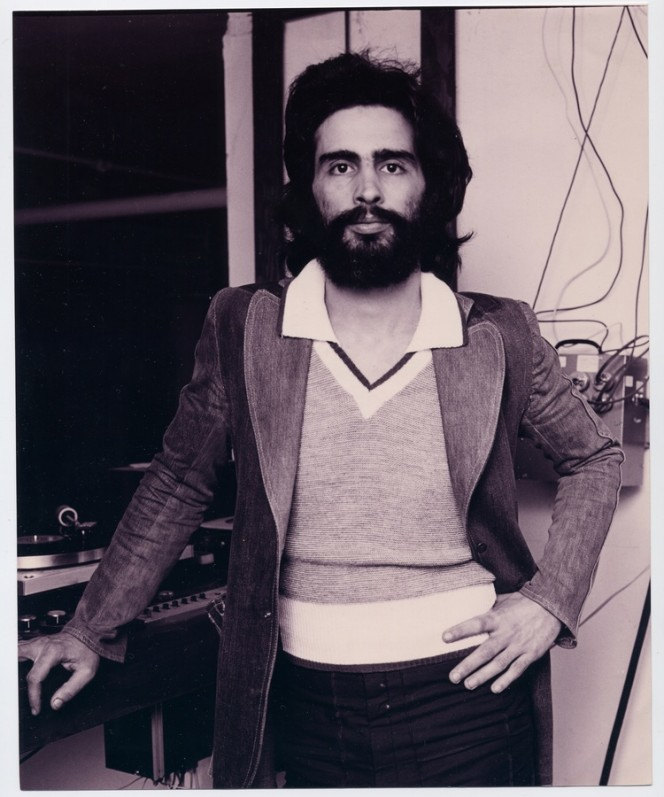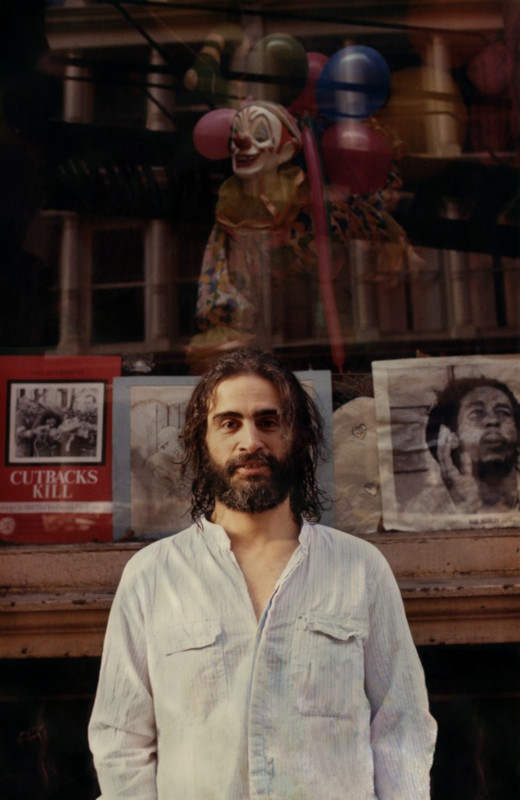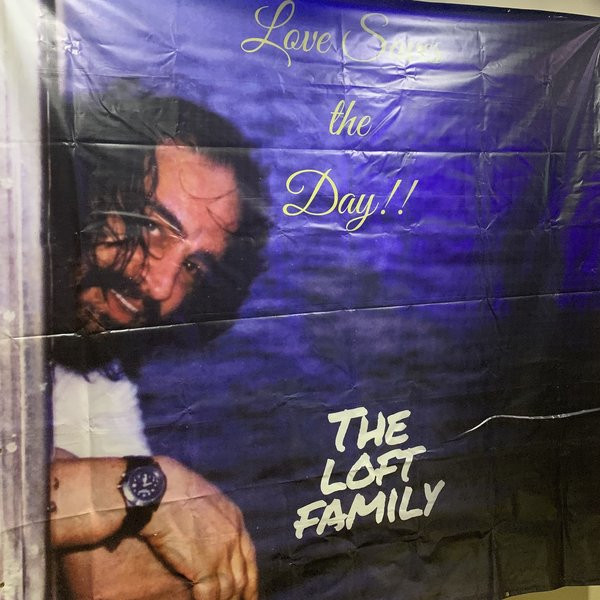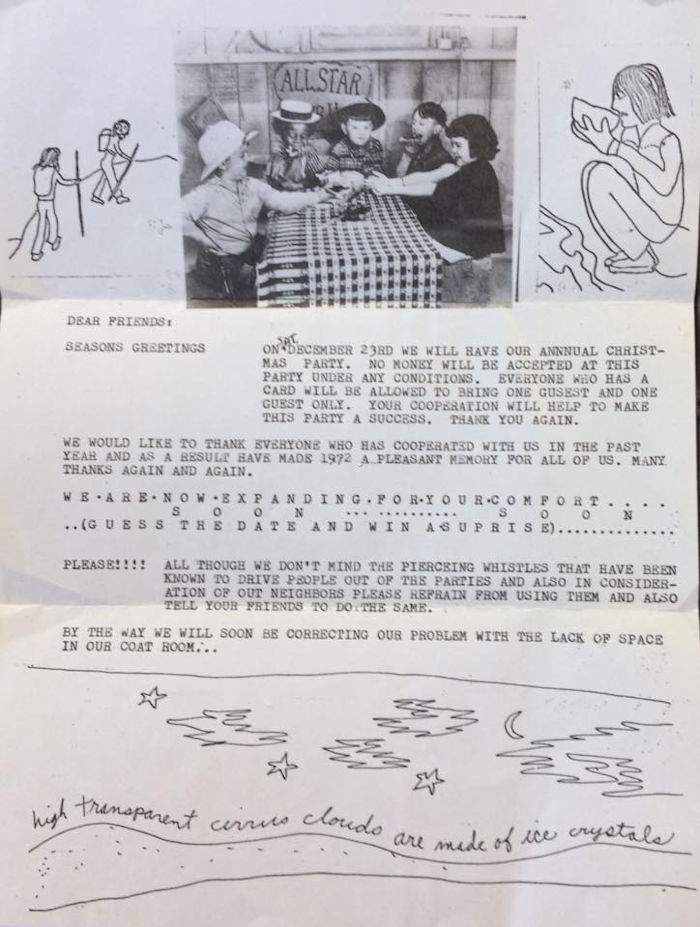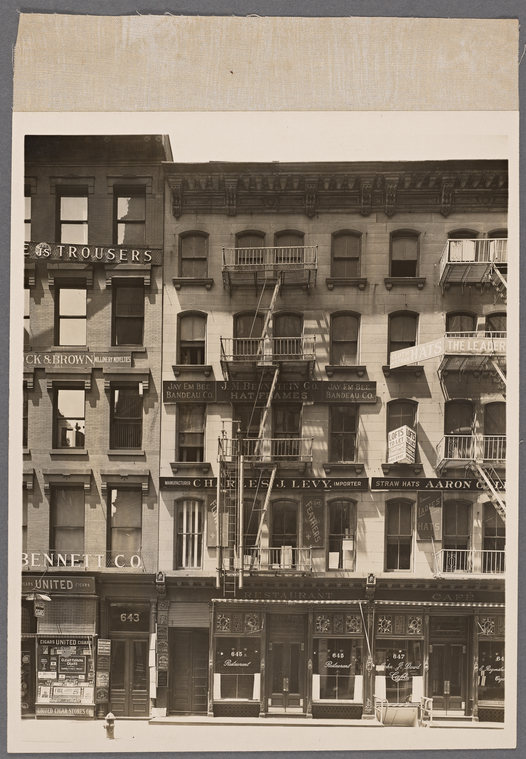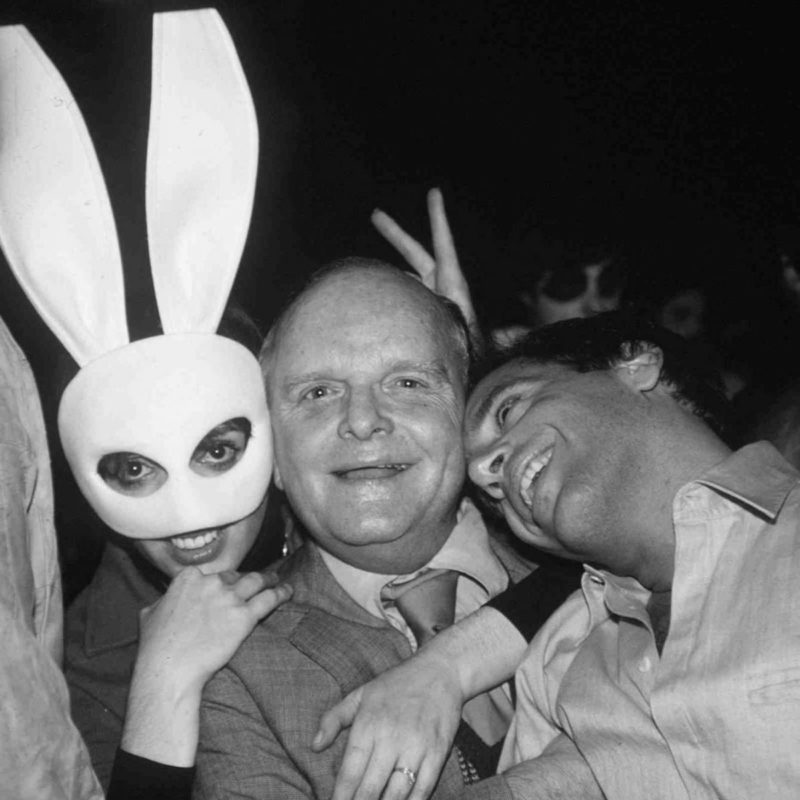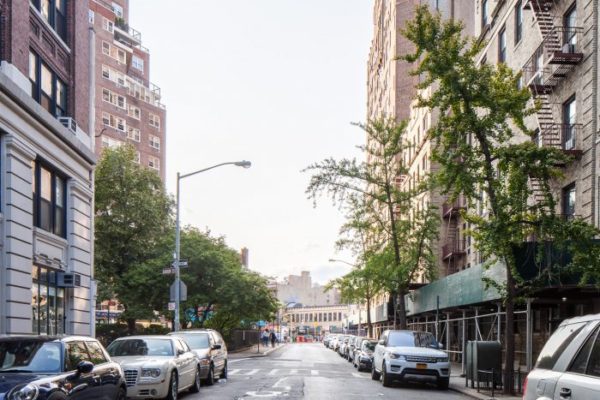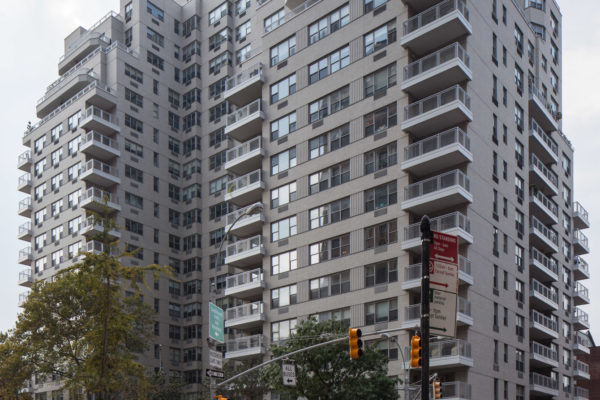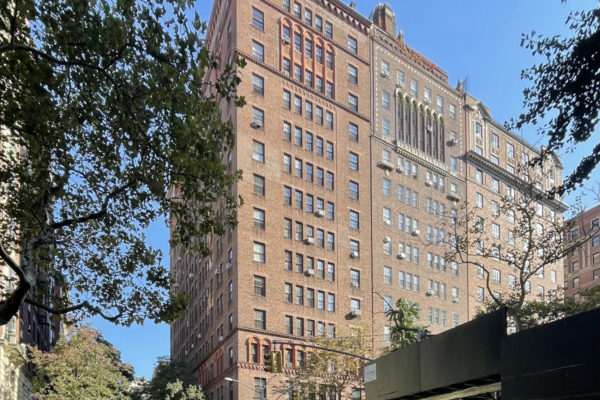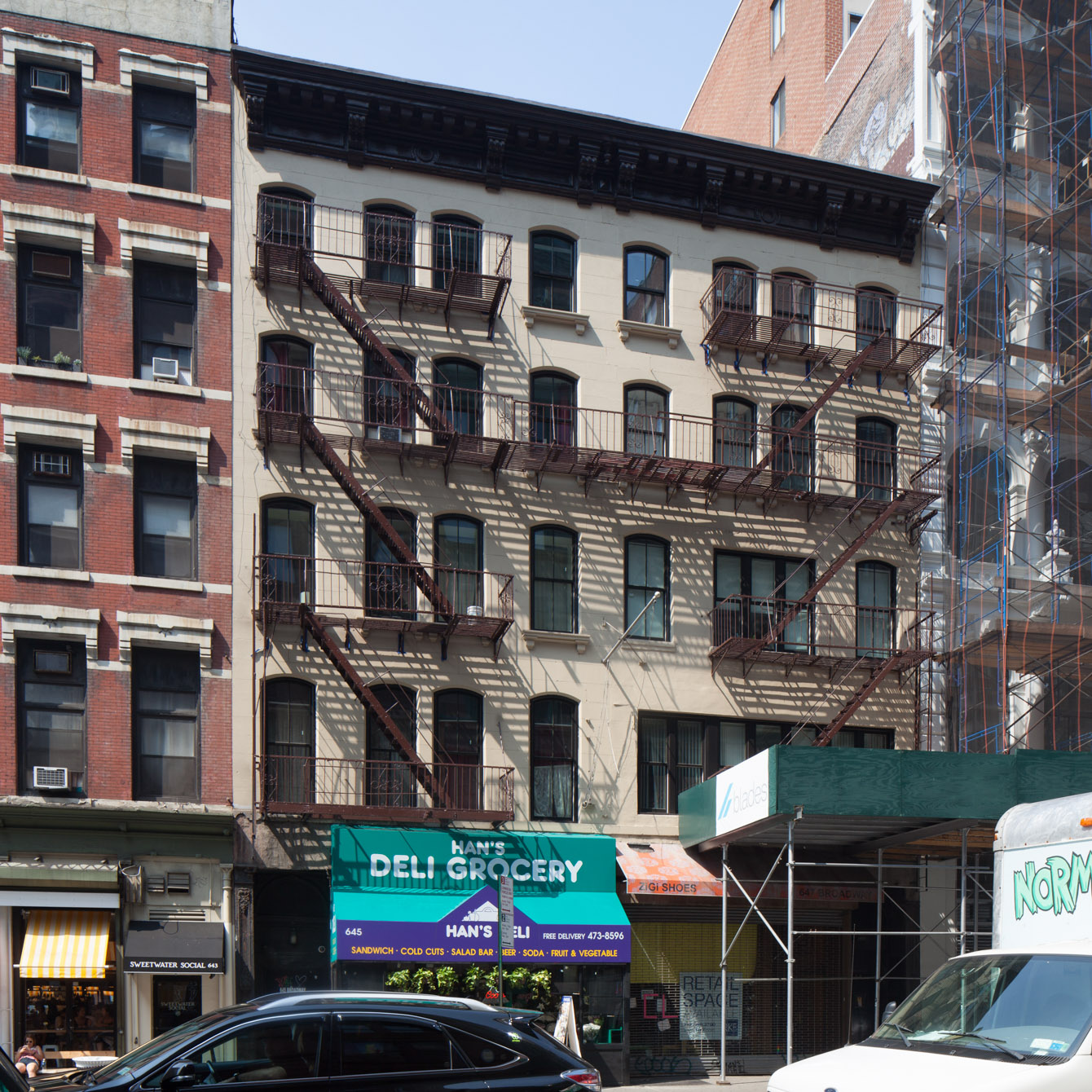
David Mancuso Residence / The Loft
overview
From Valentine’s Day 1970 to June 1974, the Loft, one of the most influential underground house parties, operated out of the second floor residence of musical host David Mancuso.
Mancuso created an egalitarian space for music and dance with a top-of-the-line sound system, eclectic musical selections, and a racially inclusive and gay-friendly mix of guests. The Loft was an alternative to the city’s commercial nightclub scene and became a model for future LGBT and straight parties and clubs.
See the entry for Pfaff’s for more information about this site’s LGBT history and connection to Walt Whitman.
On the Map
VIEW The Full MapHistory
The Loft, the name anointed by attendees, was an invitation-only, private house party held weekly on Saturday nights from midnight to approximately 6:00 a.m. David Mancuso (1944-2016), a resident of 647 Broadway since 1965, began the party on Valentine’s Day 1970 as a way to offset his monthly rent. The initial homemade invitation included the title “Love Saves the Day,” possibly a coded reference to LSD use. Guests paid approximately $2 (in the final year, $4) for an evening of dancing and refreshments; no alcohol was served.
Mancuso eschewed the title of DJ and referred to himself as musical host. In that capacity, he played an eclectic musical mix on his top-of-the-line, and ever improving, sound system that would maximize the experience of non-partnered dancing to music.
The crowd was a rich mix of classes, colors, and sexual tastes with two key things in common: they were hard-core dancers and they were utterly devoted to the Loft. Their high spirits preserved the Loft’s house party atmosphere and helped establish its reputation.
Mancuso’s 2,500-square-foot loft was simply decorated with colored streamers and balloons hanging from the ceiling and balloons on the floor. Tables were covered with bowls of punch and trays of bananas, raisins, nuts, and gum. Over the course of an evening, approximately 200 guests would attend.
Mancuso’s goal was to create an egalitarian and commerce-free safe space that broke down racial, sexual, and economic barriers. Guests were multiracial, LGBT and straight, young and old, single and coupled, and of various economic means. In an undated interview, Mancuso stressed, “Don’t forget, you had the civil rights movement going on, you had gay liberation going on. You had all these movements going on. All this music that was coming from all different directions, it was all over the place. As long as you had a neutral place where people could come and just enjoy themselves, there was such incredibly good music.”
According to author Tim Lawrence, the Loft was the most influential party of its era and the direct model for newly emerging parties and clubs. These included such New York venues as the Tenth Floor, Flamingo, 12 West, Gallery, Reade Street, Paradise Garage, and ultimately The Saint and Studio 54. In Chicago, the Warehouse was directly linked to the Loft. Many replicated the multi-cultural and polysexual diversity of the Loft while others were more exclusionary catering to white gay men. DJs and remixers of these venues were regular Loft attendees including Larry Levan, Frankie Knuckles, Nicky Siano, Francois Kevorkian, David Morales, and Tony Humphries.
In May 1973, the landlord allowed Mancuso to remove the brick wall between his space and the adjacent loft at 645 Broadway, which became the main party entrance. With the increased space, he was ultimately able to accommodate 500 attendees. As the weekly events became larger and more successful, Mancuso’s neighbors grew more intolerant of the disruptions, feared structural instability, and wanted him evicted.
By June 1974, Mancuso stopped the weekly parties, but remained as a building tenant. He relocated the Loft party to a multi-level space at 99 Prince Street where it operated from the spring of 1975 to 1985, later moving to sites in the East Village and elsewhere. Throughout his life, Mancuso never veered from his house party formula where people could enjoy music and dancing.
See the entry for Pfaff’s for more information about this site’s LGBT history and connection to Walt Whitman.
Entry by Ken Lustbader, project director (December 2020).
NOTE: Names above in bold indicate LGBT people.
Building Information
- Architect or Builder: Unknown
- Year Built: 1858-59
Sources
Barry Walters, “David Mancuso’s Message of Love,” Village Voice, November 22, 2016, accessed November 16, 2020, bit.ly/38VmZqW.
Bill Brewster and Frank Broughton, “Interview: David Mancuso,” Red Bull Music Academy, November 15, 2016, accessed November 16, 2020, win.gs/38TN5eh.
“Interview: The Loft Founder David Mancuso,” Red Bull Music Academy, accessed November 16, 2020, win.gs/3pz0tdt. [source of Mancuso quote]
Tim Lawrence, “David Mancuso presents the Loft,” Tim Lawrence, July 16, 2013, accessed November 16, 2020, bit.ly/2IGzRqq.
Tim Lawrence, “David Mancuso’s art of parties,” Tim Lawrence, November 15, 2016, accessed November 16, 2020, bit.ly/2IGkrm1.
Tim Lawrence, “From Disco to Disco: New York’s Global Clubbing Influence,” Red Bull Music Academy, accessed November 16, 2020, win.gs/2KfqKxp.
Tim Lawrence, “Remembering David Mancuso and the Loft,” Tim Lawrence, accessed November 16, 2020, bit.ly/36KgOUh.
Vince Aletti, “Soho vs. Disco: The Story of the Loft,” Village Voice, June 16, 1975.
William Grimes, “David Mancuso, Whose New York Loft Was a Hub of ‘70s Night Life, Dies at 72,” The New York Times, November 18, 2016.
Do you have more information about this site?
This project is enriched by your participation! Do you have your own images of this site? Or a story to share? Would you like to suggest a different historic site?
